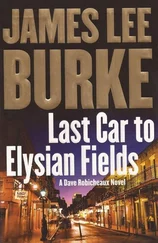Sincerely ,
N. Leopold
Dark outside the window now. Night heartens. He’d lived so long craving light. Those first few weeks, it was the light, all that immortal light.
Now he’s satisfied with a lamp. He flicks it on for comfort. He watches his face in the window. His laugh begins softly, like a murmur. Eventually it will be loud enough to wake the birds.
At the end of our street was a commune in a log mansion — Jed Holson’s house — and girls in frayed orange cable-knit sweaters and no pants would chase each other across its enormous furnitureless rooms. It was the suburbs, it was the seventies, life was bizarre and glorious, and we didn’t even know it. Jed’s father, Elijah Holson, had been a founding director of the Chicago, Rock Island and Pacific Railroad. In 1918, he built himself an eighteen-room house of locally hand-hewn oak on a bluff overlooking Lake Michigan. He dug a moat around the house and put down a drawbridge. A grand house, a famous house, a house for the ages. The son was even more eccentric. In the spirit of his own time, past seventy himself, Jed Holson went hippie. His wife fled to California, and Jed opened his father’s mythical log palace to all female comers. Long-haired men were welcome, too. The lawn was crowded with VW buses and tents. People did their laundry in the moat. Jed’s doctor lawyer banker neighbors didn’t know what to make of all the parties. It didn’t matter. They weren’t invited. By the time I was old enough to enjoy the show, Jed — his crazy beard, his experiment in alternative living, his passel of nymphs — was forgotten. The log house went dark. Free love, old hat. As a kid, I used to climb up and pace the front porch, ghosting back and forth in front of the big windows, waiting for the flesh and the laughter. Jed must have been asleep somewhere in the gloom, his chin sunk in a tangle of yellow beard.
HIGHLAND PARK, ILLINOIS, 1981
They tore down the house on Detamble, but this has never mattered. We see that house every time we drive by. It happened more than thirty years ago. A childless couple. A childless couple who had always, the Sun-Times quoted a neighbor as saying, kept to themselves. Did they truly keep to themselves? Or is it only with hindsight that we see such people in their isolation? The husband was a retired ear, nose, and throat specialist; the wife was a horticulturist at the Chicago Botanic Gardens on Lake Cook Road. It might have taken them longer to find them if not for the dog. On the night of the third day, the hunger got to be too much, and her howling finally alarmed the neighbors. They went over and rang the bell. When they got no answer, they called the police, who used an ax to break in a side door. The husband and wife were found in the garage. (The dog, an Afghan hound, was found locked in the basement.) The only signs of struggle were bloody scratches on the wife’s arms and cheeks. The husband had no defensive wounds. This led investigators to conjecture that he had been taken by surprise, while she had seen it all coming. The other clues were that both of them had their heads stove in by some type of batlike object. It may have been the fireplace poker, the only material thing, as far as anybody could tell, missing from the house. The only other compelling piece of evidence: the wife, the horticulturist, was found wearing a money belt that still contained $20,000 cash.
“Bookies,” our neighbor to the east and town opinionator Penny Buckholtz surmised. “Everybody knows, after a certain point, it’s too late to pay them back with money. And I, for one, always knew something wasn’t right about those two. Why no kids? People who live in the suburbs without kids to raise are always hiding something. Why else would they live here?”
Penny Buckholtz may have had something there, and this is pretty much how we all took it. Must have been some kind of gambling debt. Don’t mess with the mob. You think they respect a suburban border? You think they care this is Lake County? No matter how mild-mannered you seem, they’ll take care of business the only way they know how.
There are no more memorable details and no other reasons to remember this couple aside from the way they died. We hadn’t known them. We hadn’t even known them well enough to make up stories about them, except of course Penny Buckholtz, who never had any compunction about making up stories about anybody, murdered or unmurdered.
It is tempting, after so long, the file long since closed, to zero in on the dog. Dogs are sympathetic. In a lot of stories dogs are even more sympathetic than people. For hours and hours, there’s that confused, whimpering, sleeping, pacing, foraging, and finally hopelessly yowling dog. Maybe the story is the dog and how alone she was, and how silent the house seemed. Those two had always been quiet, but no voices at all is different from silence. The silence worried the dog more than hunger. The woman had a small sad way of laughing that the dog could always hear wherever she happened to be in the house. The dog would always run toward that laugh.
It should be said that the murders, in spite of their brutality, didn’t terrorize us. We didn’t lock our doors any more than we had before. Everybody knew this wasn’t the beginning of a crime wave. No omen. It was simply an aberration. Our town has always been a safe place to raise your kids. Detamble, like so many of our leafy streets, is peaceful. Nothing ever happens on Detamble. It’s mathematical. But don’t you need some sort of break in the normal for there to be normal in the first place? The normal, the leafy, the peaceful, reaches out and bludgeons. A kind of sacrifice so the rest of us can slumber on amid the trees, on the bluffs, by the lake.
DYKE BRIDGE Chappaquiddick, Massachusetts , 1976
My brother and I in the knee-deep water, standing in the tidal current, under Dyke Bridge. We are hunting whelks. Yes, it is the water Mary Jo Kopechne drowned in. I know all about it. About Teddy drunk and how the story of what happened was less covered up than simply muddled. What was there to cover up? Her body was found in his car. My brother told me. How Teddy was still mourning his brothers, both his brothers, and that he drank too much. Not that this excuses what happened, my brother says. But wouldn’t you drink if somebody shot me in the head? And then your other brother? If you had another brother? Wouldn’t you drink a whole hell of a lot and probably crash a car?
We are on vacation with our parents on Martha’s Vineyard. We are from Illinois. It is classy, according to my parents, if you are from Illinois to take a vacation on Martha’s Vineyard. It’s also Kennedyesque. My parents are still married (to each other), though my brother and I would prefer this not to be the case. We have ridden our bikes out to this bridge to see this very spot, to muck around in this famous water. My brother is wearing a T-shirt with the face of Senator Sam Ervin, the hero of Watergate, on it.
I want to remember that we were alone, that it was only the two of us, but somewhere, in some stack of pictures, in some cabinet in my father’s house, there are pictures of my brother and me standing under Dyke Bridge, so it must be that at least one of our parents was with us and recorded it, and since my mother rarely took pictures, it had to have been my father; but let’s leave him out of this. Just my brother and me in the knee-deep water and my brother telling me that Teddy was heading back to the island that night, back from the even smaller island where they’d been at a party. That he was driving a black Chevrolet, because the Kennedys may be richer than God but they aren’t ostentatious. And that Mary Jo Kopechne wasn’t even very beautiful. She wasn’t Teddy Kennedy’s wife, either, he says, but that goes with this territory.
Читать дальше












